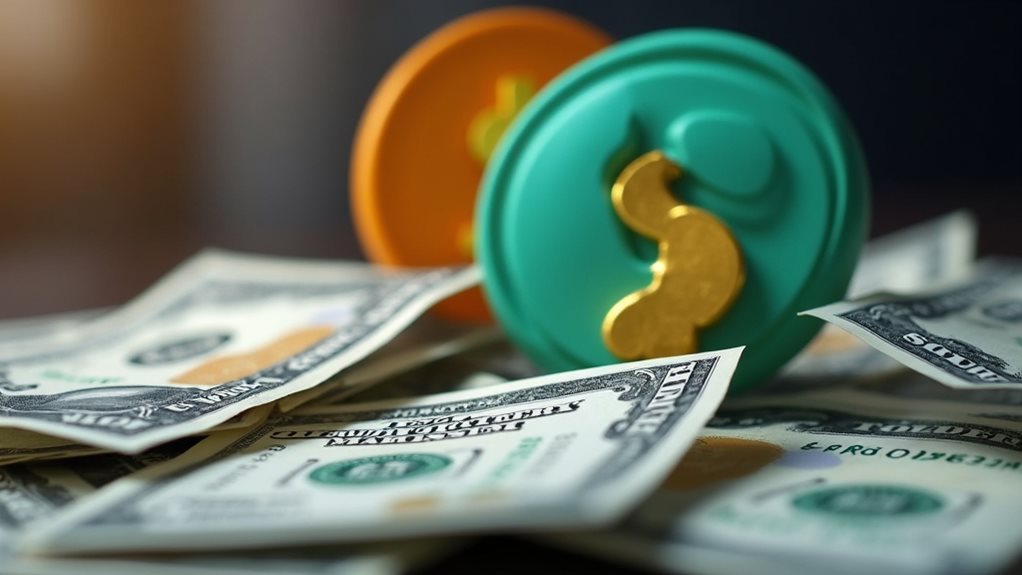Stablecoins are shaking up the U.S. Treasury market in a big way. These digital assets, backed by government securities, have exploded to $220 billion in market cap, with giants Tether and Circle holding massive Treasury positions. Their rapid growth could trigger $2 trillion in new demand for U.S. debt, dwarfing traditional buyers like Germany and Saudi Arabia. It’s a fintech revolution that’s transforming how government debt works – and the story’s just getting started.

While traditional finance keeps scratching its head over digital assets, stablecoins have quietly become a massive player in the U.S. Treasury market. Just look at the numbers: stablecoin market cap has exploded to $220 billion in Q1 2025, a mind-boggling forty-five-fold increase since December 2019. And these aren’t just any digital tokens – they’re backed by cold, hard U.S. government debt.
The big players aren’t messing around. Tether‘s sitting on a whopping $120 billion in Treasury bills, while Circle’s got another $22 billion. That’s more than some entire countries hold. Let that sink in for a minute. These crypto companies, once dismissed as fringe players, are now among Uncle Sam’s top debt customers. The STABLE Act of 2025 is currently under review to formalize their role in the Treasury ecosystem. The two giants maintain their iron grip as market leaders with 89% of total stablecoin supply. Tether has even surpassed major economic powers like Germany and Saudi Arabia in Treasury holdings.
Stablecoin giants have become massive Treasury holders, with Tether and Circle controlling more government debt than many sovereign nations.
Here’s where it gets interesting. The stablecoin market could drive a $2 trillion demand for U.S. Treasuries in the coming years. That’s not pocket change – it’s a serious shot in the arm for Treasury market liquidity. And guess what? It’s almost exclusively a dollar game, with USD stablecoins commanding 99.8% of the market. Sorry, euro fans.
The business model is brilliantly simple. These companies issue digital dollars backed by Treasury bills, pocket the interest, and everybody wins. The U.S. government gets steady buyers for its debt, and the dollar’s global dominance gets a digital boost. Who knew crypto could be such a team player?
The implications are huge for American monetary power. Every stablecoin transaction fundamentally extends the dollar’s reach into the digital domain. It’s like the U.S. accidentally stumbled into a new way to maintain its financial supremacy. And with proper regulation in the works, this trend could accelerate.
Non-USD stablecoins? They’re barely a blip on the radar at $606 million. The dollar’s digital dominance is so complete, it’s almost comical. As traditional finance finally wakes up to this reality, one thing’s becoming clear: stablecoins aren’t just changing crypto – they’re reshaping the entire U.S. Treasury market.









